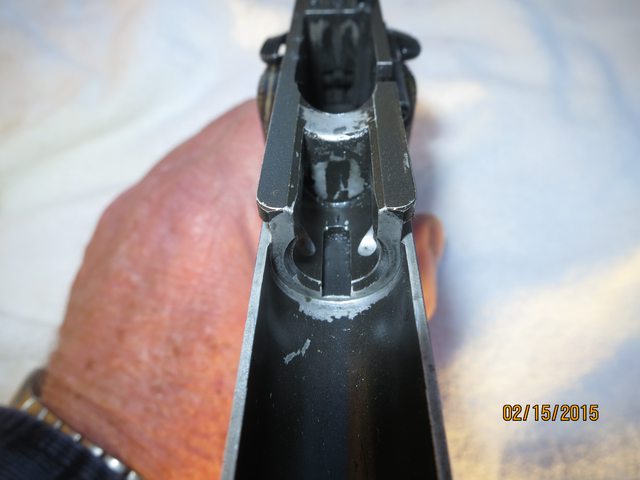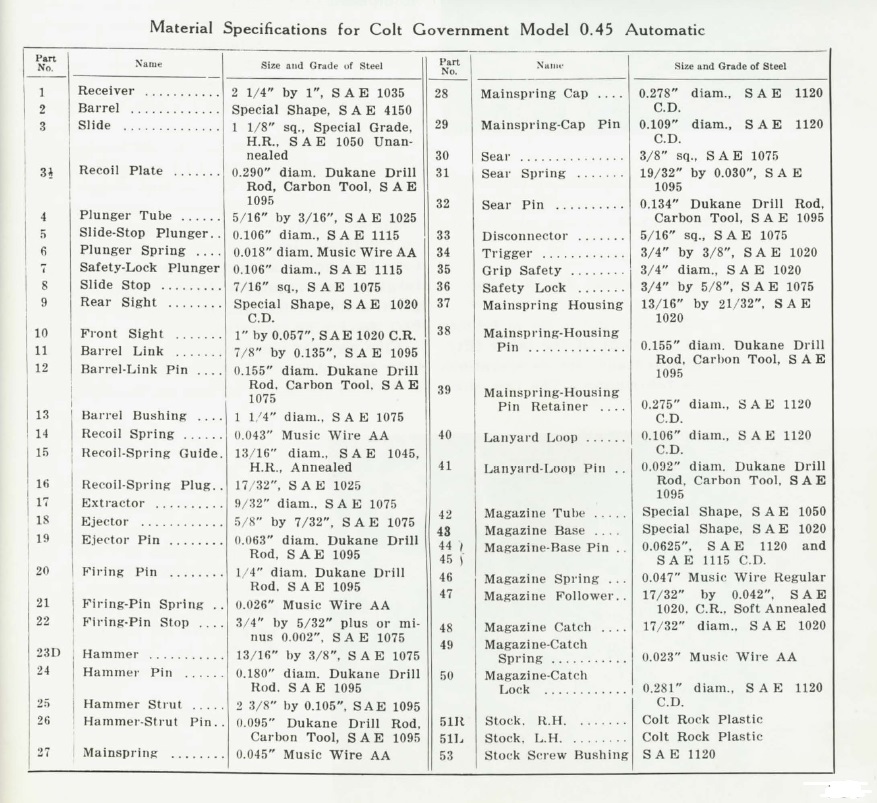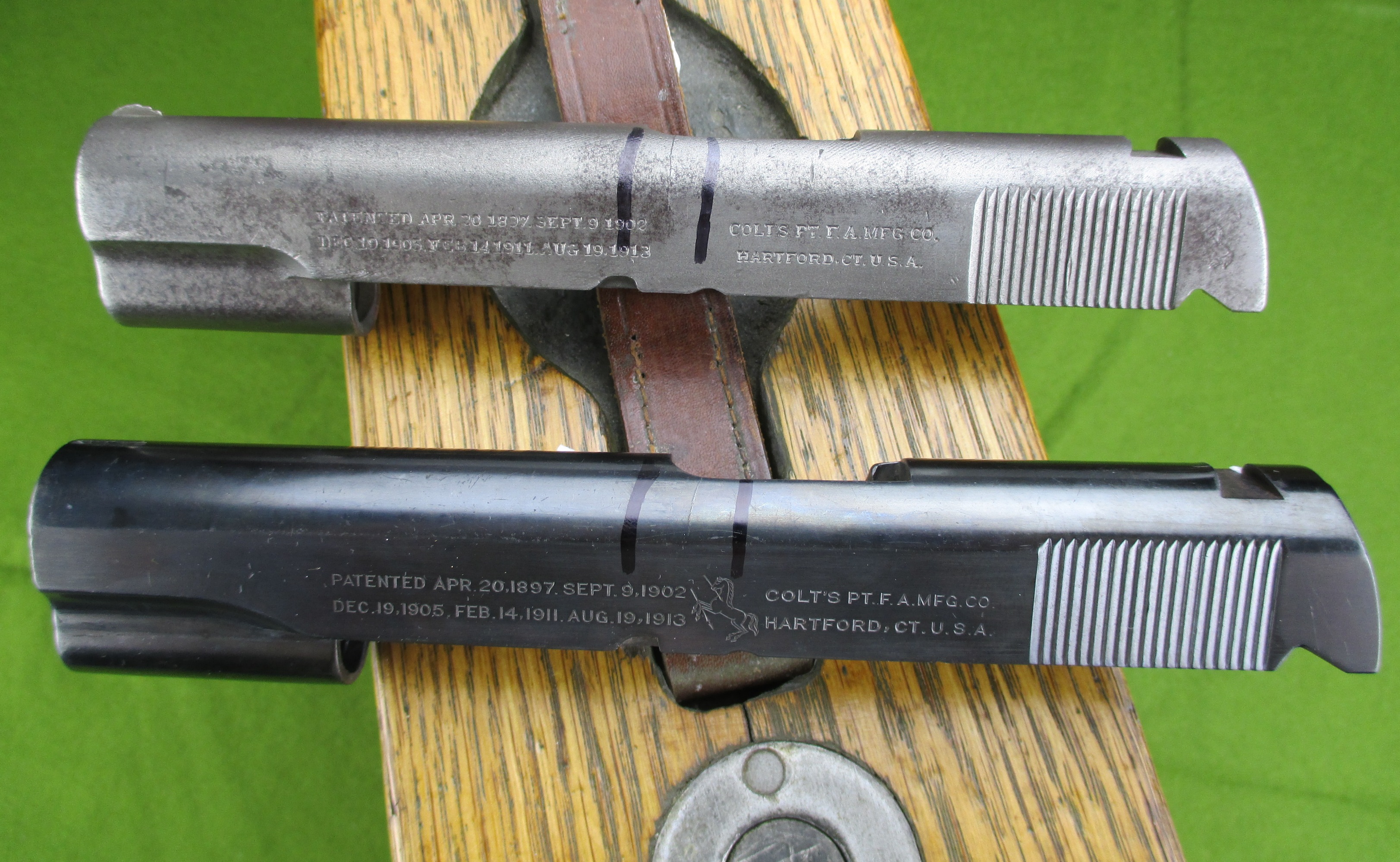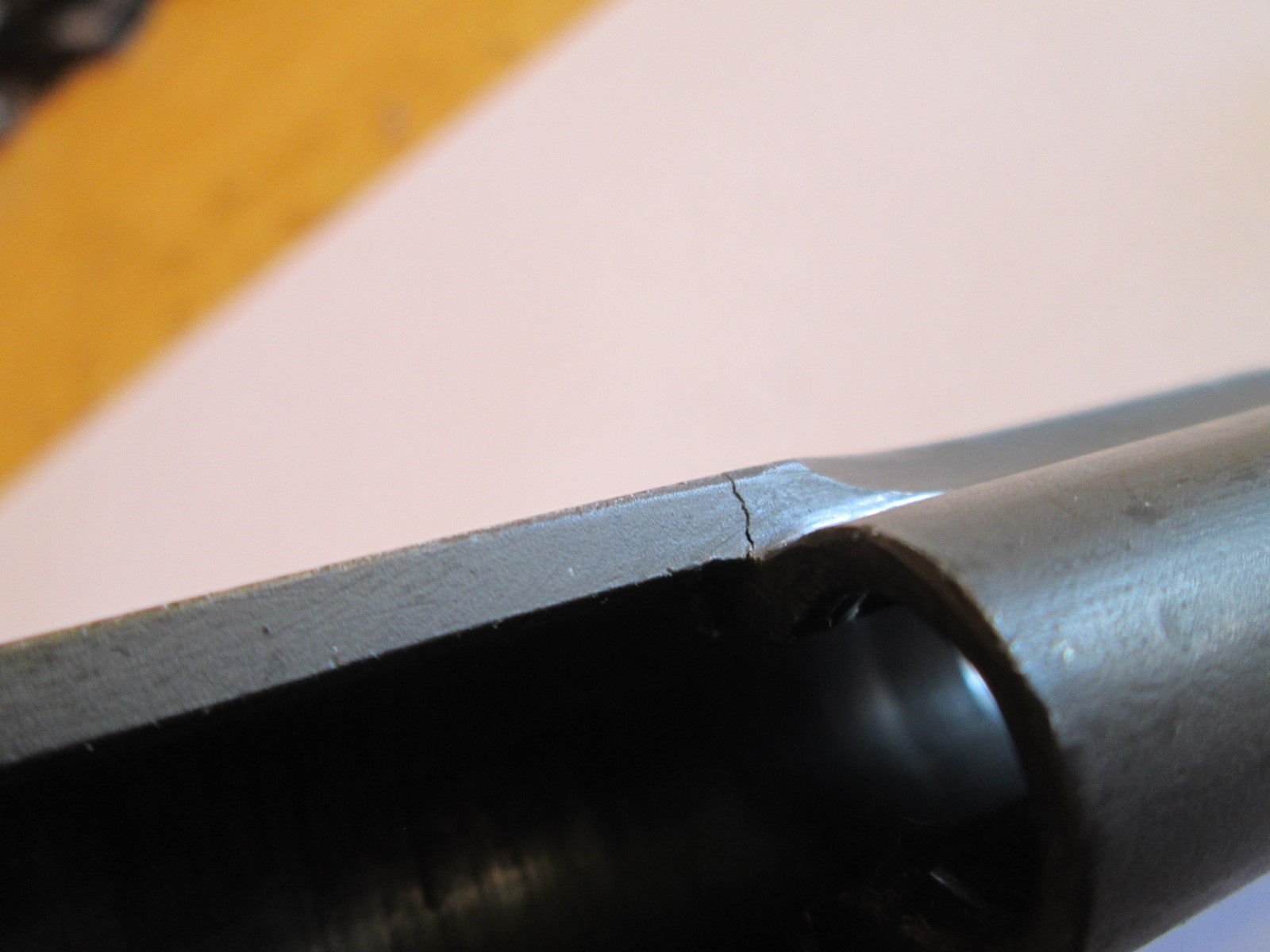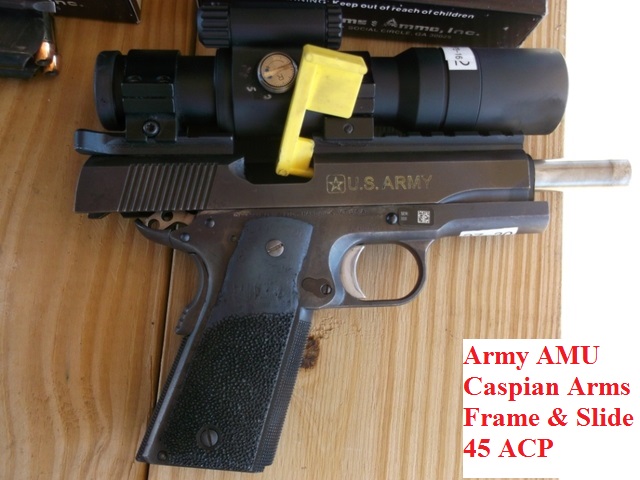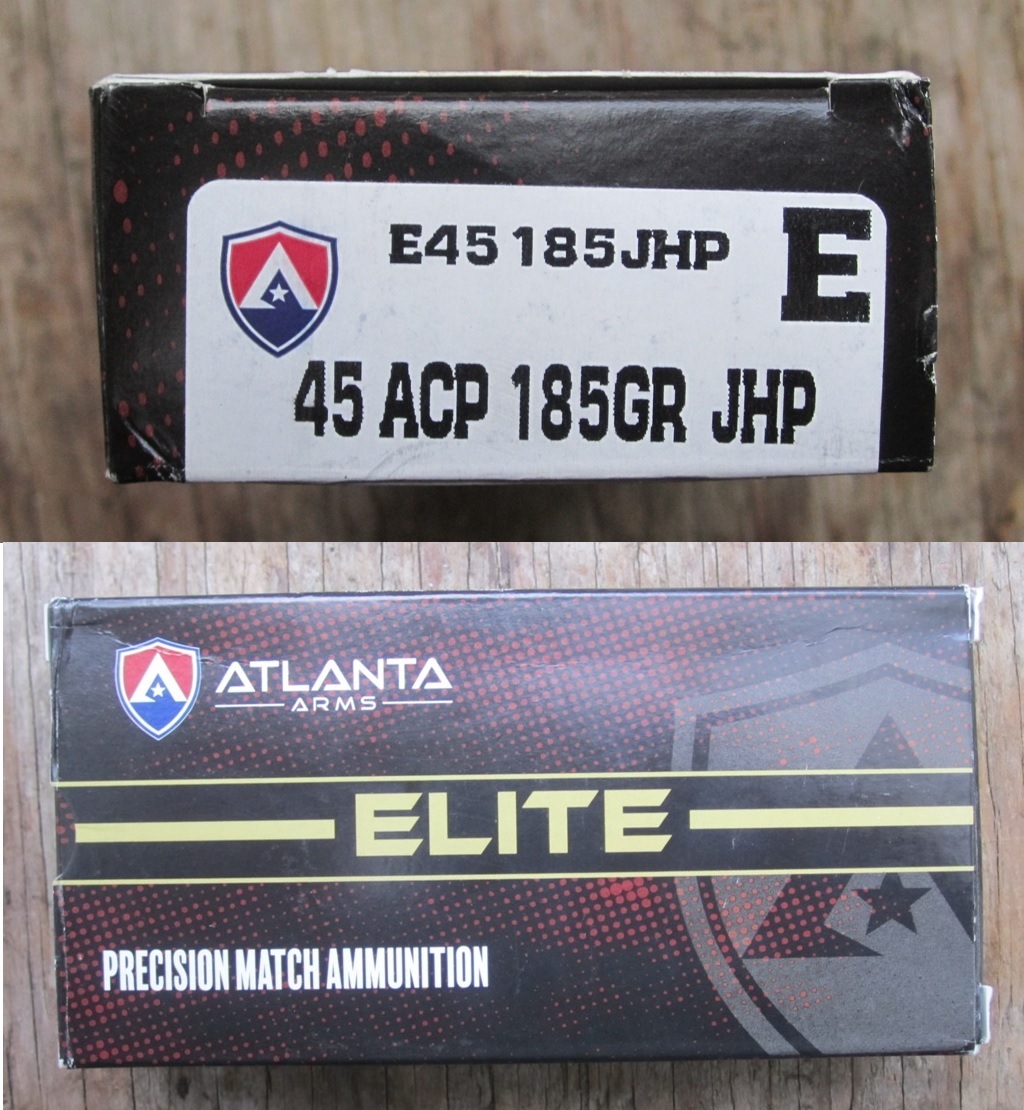I seem to remember reading somewhere an official response from Colt or Kimber stating that the minimum lifespan of an alloy frame is 20K factory rounds.
I believe that. I remember reading an article about a new Czech made auto pistol and the design lifetime was 35,000 rounds. I don't remember if it was alloy, steel, or polymer frame.
According to a fellow match shooter I met at a Regional, who worked for Remington and other firearm companies, by the 1990's firearms are being designed firstly to a price point, and the lifetime expectancy was no longer an "infinite" number of rounds. This is not unreasonable as I have handled hundreds if not thousands of vintage firearms that were almost new, or had been fired maybe 50 rounds. Given the 90% customer is not shooting a firearm out, then Companies decided to make cheaper firearms that would not last as long.
Original military 1911's up through WW2 were made of materials that just met requirements. The lifetime requirement was 6000 rounds. The frames were plain carbon 1035, and the slides 1050. The frame was made of materials that are used for railroad spikes (cheap, cheap, cheap) and lawn mower blades use 1055 steels. Also cheap, cheap, cheap.
posters on 1911 forums claim the lifetime of a vintage GI slide is between 10,000 and 20,000 rounds before they crack.
Original WW1 barrels had been said to wear out in 5000 rounds with FMJ.
I shot next to AMU shooters who claimed they were putting 5000 to 7000 rounds a month through their 1911's. This is a picture of one.
None of them knew how old the Caspians were. I don't think any of the shooters had been on the time more than seven years. The guy who told me it took three years to shoot out a barrel, must have been on the team, at least three years. According to the AMU I talked to, none of the Caspian slides and frames had cracked, or required refitting. That is amazing. They wore out several sears and hammers a year. Barrels took longer.
The AMU were shooting this ammunition at the time which is about an 800 fps load.
A number of 1911 manufacturers use 4140 for slides and frames, TISAS uses a 4140 equivalent. Originally they told me one steel, in print they wrote another. If my notes are correct, Tisas is using 42CRMo4, which is a 4140 equivalent.
These modern alloy steels are not necessarily heat treated hard, they have just enough hardness for wear. The WW1 era 1911's were dead soft, and somewhere in the 1920s the slide was hardened two inches back because the slide noses were fatigue fracturing. Tisas claims to harden their frame and slide prior to machining. This is probably industry practice now, given CNC machining. Warpage is always a risk during heat treatment. Modern steel alloys are superior in all respects compared to the older plain carbon steels used up to WW2. And probably post WW2.
Modern Metallurgy for Engineers, Sisco 1948
Page 231
“compared with carbon steels of the same tensile strength and hardness, heat treated low alloy steels have 30 to 40 percent higher yield strength, 10 to 20 per higher elongation, and 35 to 40 percent higher reduction of area. The impact resistance of the SAE steel is frequently twice that of a carbon steel of the same tensile strength.
1948 Materials Handbook
4140 steel, Oil quenched 1575, tempered 1075 brinell hardeness 286
Charpy Impact 75 ºF 93 ft/lb; -40 ºF 87 ft/lb; -100 ºF 65 ft/lb
Open Hearth 0.31 Carbon .074 Mn, .22 Si, 0.03 AL water quenched 1575, tempered 1000F
Charpy Impact 70 ºF 40 ft/lb, 0 ºF, 20 ft/lb, -100 ºF 4 ft/lb
High Charpy numbers are directly related to long fatigue lifetimes.
Relevant to this discussion is a section from Earl Naramore's book: Principles and Practice of Loading Ammunition 1954
Pg 85, Stored Energy
Stored energy is the energy left in steel when the external force is removed. It varies with the mass of the steel and as the square of the applied force. Every time a rifle is fired, a small amount of stress remains in it. If 50,000 psia is considered a safe pressure and it is increased by 10%, the stored energy increases by 21%. If the pressure is increased 20%, the stored energy increases 44% and if the pressure is run up to 70,000, as often happens with wild cats and maximum loads, the increase in stored energy will be 96%.
Kinds of failures, pg 86
The second kind of failure is classed as a fatigue failure. Most mechanical parts fail as the result of the repeated application of forces that are well below their yield strengths. The repeated stressing, however small, results in the accumulation of stress that concentrates around some stress raiser. When the total stress is high enough, the part breaks. These failures always occur suddenly and without warning. There is no initial expansion or visible cracking to give the least indication of any weakness.
A modern slide and barrel built from alloy steels should outlast the shooter. An aluminum alloy frame, well, I think 20 to 30000 rounds is a reasonable limit. Steel structures can be built thick enough such that the fatigue lifetime will be infinite. (I have no idea if modern steels turn the slide or frame of a 1911 to an infinite stress cycle structure) However, no matter how thick you make an aluminum structure, it will always fatigue fracture given enough stress cycles. If you want to lengthen the lifetime of an alloy frame, shoot light loads. It will still crack given enough rounds, but it will take longer.
Alloy pistols are the carry alot, shoot a little guns.
I have no idea of the lifetime of tupperware guns. Don't want one, and don't have any.


